#Glovery
Explore tagged Tumblr posts
Text
Moth Of The Day #215
Glover's Silkmoth
Hyalophora gloveri
From the saturniidae family. They have a wingspan of 80-100 mm. They inhabit woodland, suburban gardens and a variety of other wooded habitats. They can be found in the Rocky Mountain states, the western parts of the northern Great Plains, and the Canadian prairie provinces, north-west to at least central Alberta, and northern Mexico.
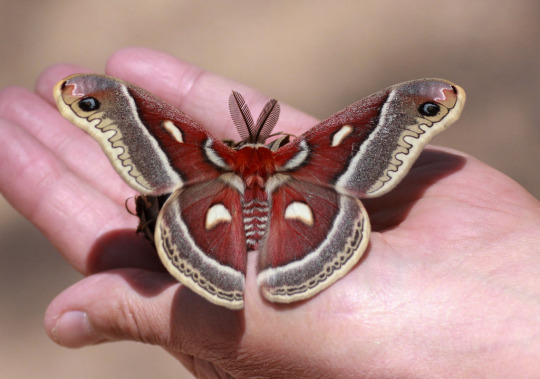
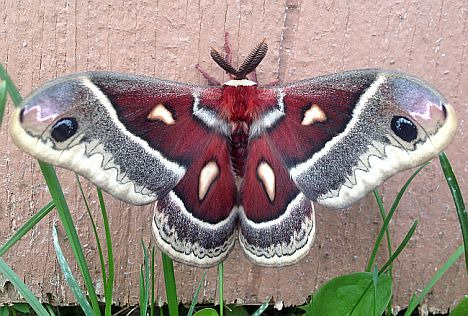
Image sources: [1] [2]
#moth#moths#lepidopterology#lepidoptera#nature#pretty moth#insect#bugs#moth of the day#motd#lepidoptery#entomology#bugblr#bug#insects#beautiful moth#hyalophora gloveri#glovers silkmoth#saturniidae#saturniidae moth#saturniid
555 notes
·
View notes
Text
Daily Dose of Lepidoptera
[Day 3]
-Colorful Metalmark Moth-
Rubropsichia fuesliniana


-Glover’s Silkmoth-
Hyalophora gloveri


-Indian Lily Moth-
Polytela gloriosae


154 notes
·
View notes
Note
give us the moth list bestie i know you wanna talk about it
THE MOTH LIST!!!!!
OK OK OK THIS LIST IS BASED LESS ON PERSONALITY AND MORE ON AESTHETICS LETS BEGIN
RAPH: Atlas Moth (Attacus atlas)
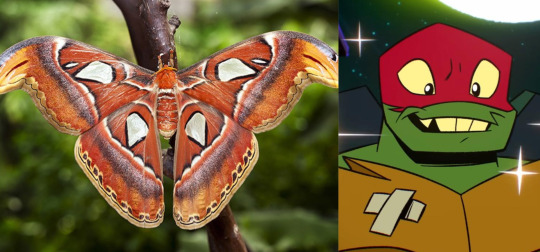
LEO: Scylla Firetip (Elbella scylla)
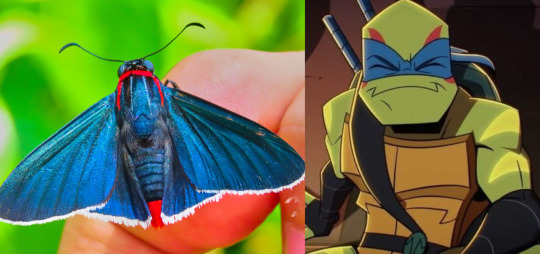
DONNIE: White-lined sphinx moth (Hyles lineata)

MIKEY: Comet moth/Madagascan moon moth (Argema mittrei)

BONUS CONTENT
APRIL: Madagascan sunset moth (Chrysiridia rhipheus)
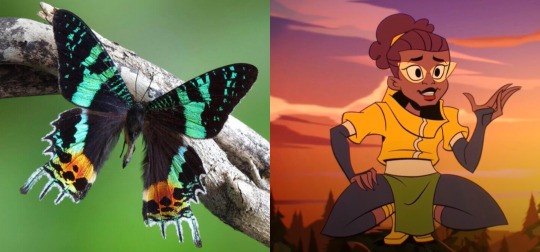
SPLINTER: Isabella tiger moth aka wooly bear moth (Pyrrharctia isabella)

CASEY JONES: Glover's silkmoth (Hyalophora gloveri)

CASEY JR: Cabbage tree emperor moth (Bunaea alcinoe)
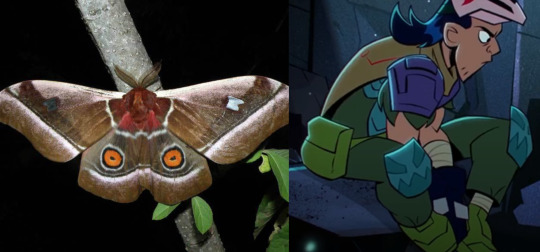
509 notes
·
View notes
Text

I heard mercats were popular?
Dalhousie Catfish (Neosilurus gloveri)
Dalhousie Springs in South Australia
Status: Critically Endangered
38 notes
·
View notes
Text
Elusive leporids and pikas: rare survey
Tomasz Q. Pietrzak

Populations of uncertain origin and relatedness are called recondite populations. Their common feature is also the fact that there weren’t studied before. Many populations look like similar despite that they may differ from each other enough to be grouped to the other taxas. Populations less similar to each other genetically and morphologically are distinct units. Enigmatic groups or populations within disturbed areas are least understood. These rules fit many vertebrate populations including small furbearer mammals. Leporidae consists above 60 species living around the world. Some populations were never before investigated. This subject is investigated for detection in gaps of their ecology.
One of the population is European hare (Lepus europaeus) living in Caucasus Azerbaijan region or anatolian hares of the same species. It is believed that these population are more genetic distant to other hare populations occurred in Western Europe. French or German population is more related to South American or Australian populations than those living in siberian regions. It is documented that hares living in South America occupied various habitats from bushy steppes to wooded savannahs and humid forests. This is very interesting fact related to occupied free-niches in habitats. Various pelage variations of European hare is known throughout it’s range. e.g. in Turkey it is believed to have at least six kind of pelage variations depend geographically including pale wheat or blackish. In southern Poland I documented the same variations depend on locations even on small range. In Pogórze Tarnowskie area there are more brownish hare than in mountains of Beskid Wyspowy, where exist paler brownish and wheat hares.
Conservation is kind of scientific approach for protection of species. Conservation take themselves sources of ecological science. Many of leporid forms are threatened by extinction. Little is known about asiatic wooly hare (Lepus oiostolus). There are much gaps in knowledge of tropical kinds of these animals. Chinese lands are inhabited by almost unknown small lagomorphs pikas. Glover’s pika (Ochotona gloveri) live in central China in harsh places and moupin pika (Ochotona thibetana) is enigmatic animal. Other species was not yet investigated in broader sense. There are six species of pikas within pakistani wildlife. One of them is Afghan red pika (Ochotona rufescens), reddish lagomorph living in mountains. It is species living in fragmented populations for many times. Little is known on populations from Turkmenia or Armenian population.Ochotona roylei is better known species.Some research was conducted studies on population abundance of this such little-known animal. Population data of that species elsewhere apart of known range e.g. in China is undelivered. Populations of some other species was not yet evaluated in these countries of central Asia. Some researchers provided mysterious news on medical uses “mumeo” of pikas un Kazakhstan. Many species of pikas live throughout central Asian worlds, and plenty of populations could be inhabited in regions not yet surveyed. Creatures black or very dangerous is known in asiatic countries and it could be species of pikas. Many of pika populations was enigmatic.
New species of leporid, Venezuelan lowland rabbid (Sylvilagus varynaensis) was unknown up to 2001, despite that is the largest species of its own genus. This silvilagus rabbit is endemic to open habitat of Fundo Millano and Chorrosco Bajo in state of Barinas and is described based on three aspects of taxonomic evaluation. It is probably there possible exist more endemic mammals of this genus or family in not-recognized areas of tropical thick forested regions of South America in such countries as Columbia, Suriname or northeastern Brasil. More reports of that rabbits in forested regions was noted.
On the opposite part of world, on two small islands of Japan, Amami Ōshima and Toku-no-Shima, located between southern Kyūshū and Okinawa live inhabitant, primitive living fossil similar to animals living in Miocene, namely Amami rabbid once widely distributed throughout mainland Asia, in nowadays survived as nocturnal forest-dweller. It have outlandish appearance and is rarely seen by natives. Furthermore this nocturnal species also leads a sort of unusual lifestyle. Although endangered, based on fecal pellet count and resident survey it is estimated to be almost 5 thousand individuals on both Islands. Predators is threat for surviving this uncertain populations and are responsible for decline in their size. There is lack of survey of more isolated populations. Very low abundant species living elsewhere in surrounding or distant asian Islands is not yet detected.
Bunyoro rabbit (Poelagus marjorita) monothypic and endemic to central african is incredible rare in museum and gathered in two relic populations living in quite-well available conditions in unexplored habitats. Absolutely little was known about population. Once determined in 2006 as population very restricted into four countries, but in 2013 carried out estimation that it could live in high abundance as provided by night-road surveys. It is probable that in one habitats or regions it could live in high or low abundance, respectively. There are more living endemic rabbits, those living in Mexico volcano, on southeastern Asian rainforest and elsewhere not yet reported by zoologists. Electrise reports are not yet provided.
There are one hare species occurred in northern and western Africa, namely Cape Hare (Lapus capenesis), occurred elsewhere in African continent. Although, there are plenty of local forms of this such kind of leporid, many of them are different to others, including (L.c. whitakeri) in Mahgreb lands. These forms was once recognized, but due to lack of genetic evidence and no any conservation or taxonomic evaluation are forgotted for years.
Recondite populations of leporids are globally widespread and inhabits isolated regions in data-poor countries. Summarized, many populations was never before investigated due to lack of supports. Small detection probability and rarity within populations are enigma problem and further cryptozoological investigations show points where those populations and species of uncertain position exist. There are many more unknown populations of leporids and pikas. Investigations devoted its existence and moreover population parameters remain unresolved.
References:
Haleem A., Ilyas O., Syed Z., Arya S. K. 2009. Abundance of Royle's pika (Ochotona roylei) along an altitudinal gradient in Uttarakhand, Western Himalaya. Hystrix It. J. Mamm. 20(2): 111-119
Bonino N., E.D. Cossíos & J. Menegheti. 2010. Dispersal of the European hare, Lepus europaeus, in South America. Folia Zoologica 59:9-15
Demirbaş Y., Albayrak İ. and A. Yilmaz. 2013. Studies of ecomorphological variations of the European hare (Lepus europaeus) in Turkey. Arch. Biol. Sci., Belgrade, 65 (2), 559-566
Durant P. and Guevara M. A. 2001. A new rabbit species (Sylvilagus, Mammalia: Leporidae) from the lowlands of Venezuela. Revista de Biologia Tropical 49(1): 369-381.
Durant P. and Guevara M. A. 2000. Habitat of a Venezuelan lowland rabbit, Sylvilagus varynaensis (Lagomorpha: Leporidae). Revista de Ecologia 7(1-2): 1-10.
Happold D. C. D. and Wendelen, W. 2006. The distribution of Poelagus marjorita (Lagomorpha: Leporidae) in central Africa. Mammalian Biology 71(6): 377-383
Sert H., Suchentrunk F. and Erdoğan A. 2005. Genetic diversity within Anatolian brown hares (Lepus europaeus Pallas,1778) and differentiation among Anatolian and European populations. Mammalian Biology 70, 171-186.
online sources:
http://www.adventureandscience.org/2/post/2013/03/the-mysterious-mumeo.html
3 notes
·
View notes
Text
Back on my hyperfixation shenanigans so I have not slept and here's a list of what I consider to be the prettiest beetles, butterflies and moths, damselflies, and grasshoppers and crickets that inhabit Colorado and Kentucky according to insectidentification.org :
COLORADO
Emerald ash borer (Agrilus planipennis)
Fifteen-spotted lady beetle (Anatis labiculata)
Golden tortoise beetle (Charidotella sexpunctata)
Knapweed root weevil (Cyphocleonus achates)
Longhorn beetle (Semanotus amethystinus)
Dogbane Leaf Beetle (Chrysochus auratus)
European Ground Beetle (Carabus nemoralis)
Golden Net-wing Beetle (Dictyoptera aurora)?
Margined Blister Beetle (Epicauta funebris)
May Beetle - P. lanceolata (Phyllophaga lanceolata)
Mottled Tortoise Beetle (Deloyala guttata)
Pleasing Fungus Beetle (Gibbifer californicus)
Poplar Borer Beetle (Saperda calcarata)
Shining Leaf Chafer - Anomala spp. (Anomala spp.)
Signate Lady Beetle (Hyperaspis signata)
American Lappet Moth (Phyllodesma americana)
Cinnabar Moth (Tyria jacobaeae)
Common Checkered-Skipper (Pyrgus communis)
Glover's Silkmoth (Hyalophora columbia gloveri)
Great Ash Sphinx Moth (Sphinx chersis)
Autumn Meadowhawk (Sympetrum vicinum)
Black Saddlebags Skimmer (Tramea lacerata)
Bird Grasshopper (Schistocerca spp.)
Obscure Bird Grasshopper (Schistocerca obscura)
Sooty Longwing Katydid (Capnobotes fulginosus)
KENTUCKY
Andrew's Snail-eating Beetle (Scaphinotus andrewsii)
Black Firefly (Lucidota atra)
Calligrapha Beetle (Calligrapha spp)
Eastern Hercules Beetle (Dynastes tityus)
Emerald Euphoria Beetle (Euphoria fulgida)
Glowworm (Phengodes spp.)
Goldsmith Beetle (Cotalpa lanigera)
Metallic Wood-boring Beetle: Chalcophora (Chalcophora fortis)
Notched-mouth Ground Beetle (Dicaelus purpuratus)
One-spotted Tiger Beetle (Apterodela unipuncata)
Rainbow Darkling Beetle (Tarpela micans)
Rainbow Scarab Beetle (Phanaeus vindex)
Six-spotted Tiger Beetle (Cicindela sexguttata)
Southern Sculptured Pine Borer Beetle (Chalcophora georgiana)
Stag Beetle (Lucanus capreolus)
Twice-stabbed Lady Beetle (Chilocorus stigma)
Vietinghoff's Ground Beetle (Carabus vietinghoffii)
Abbott's Sphinx Moth (Sphecodina abbottii)
American Ermine Moth (Yponomeuta multipunctella)
Arched Hooktip (Drepana arcuata)
American Bird's-Wing Moth (Dypterygia rozmani)
Arcigera Flower Moth (Schinia arcigera)
Attentive Crocus Moth (Xanthotype attenuaria)
Basswood Leafroller (Pantographa limata)
Beautiful Wood-Nymph (Eudryas grata)
Black-waved Flannel Moth (Megalopyge crispata)
Blackberry Looper (Chlorochlamys chloroleucaria
Blinded Sphinx Moth (Paonias excaecata)
Bluish Spring Moth (Lomographa semiclarata
Buck Moth (Hemileuca maia)
Carmine Snout Moth (Peoria approximella)
Carrot Seed Moth (Sitochroa palealis)
Cecropia Silk Moth (Hyalophora cecropia)
Changeable Grass-Veneer (Fissicrambus mutabilis)
Colorful Zale (Zale minerea)
Common Lytrosis Moth (Lytrosis unitaria)
Confused Eusarca (Eusarca confusaria)
Cross-lined Wave (Timandra amaturaria)
Curve-toothed Geometer (Eutrapela clemataria)
Dark-banded Geometer (Ecliptopera atricolorata)
Deep Yellow Euchlaena (Euchlaena amoenaria)
Diaphania costata (Diaphania costata
Dimorphic Macalla (Epipaschia superatalis)
Dot-lined White (Artace cribrarius)
Dotted Gray (Glena cribrataria)
Drab Prominent (Misogada unicolor)
Eight-spotted Forester Moth (Alypia octomaculata)
Elder Shoot Borer (Achatodes zeae)
Explicit Arches (Lacinipolia explicata)
Eyed Paectes Moth (Paectes oculatrix)
Falcate Orangetip (Anthocharis midea) (female)
Fall Webworm (Hyphantria cunea)
False Crocus Geometer (Xanthotype urticaria
Fervid Plagodis (Plagodis fervidaria)
Fig Sphinx (Pachylia ficus)
Friendly Probole Moth (Probole amicaria)
Giant Leopard Moth (Hypercompe scribonia)
Goldcap Moss-eater Moth (Epimartyria auricrinella)
Gray-edged Hypena (Hypena madefactalis)
Green Arches (Anaplectoides prasina)
Hag Moth (Phobetron pithecium
Hibiscus Leaf Caterpillar Moth (Rusicada privata)
Imperial Moth (Eacles imperialis)
Lesser Maple Spanworm Moth (Speranza pustularia
Luna Moth (Actias luna)
Melissa Blue Butterfly (Plebejus melissa spp.)
Modest Sphinx Moth (Pachysphinx modesta)
Morbid Owlet Moth (Chytolita morbidalis)
Orange-patched Smoky Moth (Pyromorpha dimidiata)
Pale Beauty (Campaea perlata)
Pale Lichen Moth (Crambidia pallida)
Pale Metarranthis (Metarranthis indeclinata)
Pandorus Sphinx Moth (Eumorpha pandorus)
Parthenice Tiger Moth (Apantesis parthenice)
Pearly Wood-Nymph Moth (Eudryas unio)
Pero Moth (Pero spp.)
Pink-patched Looper (Eosphoropteryx thyatyroides)
Pipevine Swallowtail (Battus philenor)
Pistachio Emerald Moth (Hethemia pistasciaria)
Plebeian Sphinx Moth (Paratrea plebeja) (Caterpillar)
Primrose Moth (Schinia florida)
Promiscuous Angle Moth (Macaria promiscuata)
Raspberry Pyrausta (Pyrausta signatalis)
Rustic Sphinx Moth (Manduca rustica)
Saddleback Caterpillar Moth (Acharia stimulea)
Saddled Yellowhorn (Colocasia flavicornis)
Salt-and-pepper Looper Moth (Syngrapha rectangula)
Satin Moth (Leucoma salicis)
Scarlet-winged Lichen Moth (Hypoprepia miniata)
Schlaeger's Fruitworm Moth (Antaeotricha schlaegeri)
Showy Emerald Moth (Dichorda iridaria)
Small Bird Dropping Moth (Ponometia erastrioides)
Snowy Urola (Urola nivalis)
Sorghum Webworm Moth (Nola cereella)
Southern Flannel Moth (Megalopyge opercularis)
Southern Longhorn Moth (Adela caeruleella)
Southern Pine Sphinx (Lapara coniferarum)
Southern Tussock Moth (Dasychira meridionalis)
The Badwing (Dyspteris abortivaria)
Unspotted Looper Moth (Allagrapha aerea)
Venerable Dart Moth (Agrotis venerabilis
Vine Sphinx Moth (Eumorpha vitis)
Walnut Sphinx Moth (Amorpha juglandis)
Wavy-lined Emerald Moth (Synchlora aerata)
Western Grapeleaf Skeletonizer Moth (Harrisina metallica)
White Flannel Moth (Norape ovina)
White Slant-line Moth (Tetracis cachexiata)
White-fringed Emerald Moth (Nemoria mimosaria)
Yucca Moth (Tegeticula, Greya, and Prodoxus spp.)
Carolina Locust (Dissosteira carolina)
Eastern Shieldback Katydid (Atlanticus spp.)
Slender Meadow Katydid (Conocephalus fasciatus)
True Katydid (Pterophylla camellifolia)
Ebony Jewelwing (Calopteryx maculata)
Midland Clubtail (Gomphurus fraternus)
Red Saddlebags (Tramea onusta)
Seepage Dancer (Argia bipunctulata)
5 notes
·
View notes
Text
my name is glovery, i am a humanoid from another dimensional plan I draw some stuff and i also like to paint on canvas, 99% of the stuff that i draw are oc related. visit my carrd, i have other socials ..............

0 notes
Text
L’Oreal Casting Crème Gloss
This incredible L'Oreal Paris Casting Crème Gloss, which is ammonia-free, is really simple to use.The following items are included in this pack's kit.
Developer Cream,
Colorant
leaflet with usage instructions
an item of glovery. Before applying, always conduct a patch test and read the instruction manual that is included with the product. Step 1: Carefully screw the top on the development cream bottle after adding the creme colourant (no ammonia recipe). To mix the colourant and developer, thoroughly shake the bottle. Step 2: Put on your gloves, cut the tip of the developer bottle, and apply the creme gloss to parts of your wet hair one at a time, distributing it evenly all the way to the ends. Step 3: Apply the Crème Cast, Give the Casting Crème Gloss around 20 minutes to work on your hair. Step 4: To ensure the removal of residues, rinse your hair twice with warm water after 20 minutes. Step 5: Use the conditioner that came with the kit (avoid the roots). After letting it sit on your hair for two to three minutes, give it one last rinse. To find out more about this product, check out this link:
0 notes
Text
How to use L'Oreal casting creme gloss
This incredible L'Oreal Paris Casting Crème Gloss, which is ammonia-free, is really simple to use.The following items are included in this pack's kit.
Developer Cream,
Colorant
leaflet with usage instructions
an item of glovery. Before applying, always conduct a patch test and read the instruction manual that is included with the product. Step 1: Carefully screw the top on the development cream bottle after adding the creme colourant (no ammonia recipe). To mix the colourant and developer, thoroughly shake the bottle. Step 2: Put on your gloves, cut the tip of the developer bottle, and apply the creme gloss to parts of your wet hair one at a time, distributing it evenly all the way to the ends. Step 3: Apply the Crème Cast, Give the Casting Crème Gloss around 20 minutes to work on your hair. Step 4: To ensure the removal of residues, rinse your hair twice with warm water after 20 minutes. Step 5: Use the conditioner that came with the kit (avoid the roots). After letting it sit on your hair for two to three minutes, give it one last rinse. To find out more about this product, check out this link:
1 note
·
View note
Text
How to use L'oreal Casting Creme Gloss?
How to use L’oreal Casting Creme Gloss?
Hi, This incredible L'Oreal Paris Casting Crème Gloss, which is ammonia-free, is really simple to use.
The following items are included in this pack's kit.
Developer Cream,
Colorant for creme
Leaflet with usage instructions
An item of glovery.
Before applying, always conduct a patch test and read the instruction manual that is included with the product.
Step 1: Carefully screw the top on the development cream bottle after adding the creme colourant (no ammonia recipe). To mix the colourant and developer, thoroughly shake the bottle.
Step 2: Put on your gloves, cut the tip of the developer bottle, and apply the creme gloss to parts of your wet hair one at a time, distributing it evenly all the way to the ends.
Step 3: Apply the Crème Cast. Give the Casting Crème Gloss around 20 minutes to work on your hair.
Step 4: To ensure the removal of residues, rinse your hair twice with warm water after 20 minutes.
Step 5: Use the conditioner that came with the kit (avoid the roots). After letting it sit on your hair for two to three minutes, give it one last rinse.
It gives you a natural colour that is deep and vibrant and lasts up to 28 shampoos.
This product is accessible for purchase here:
1 note
·
View note
Photo

another shot of my moth-friend from yesterday ;o;
76 notes
·
View notes
Photo

@lishd submitted: Saw this friend in the intro for Breaking Bad 2.2, presumably found in Albuquerque. Thought an ID would be fun. :)
I spotted this caterpillar upon a recent rewatch, too! Looks to me like a purslane moth, Euscirrhopterus gloveri. Here’s an adult:

Photo by mikeburchett
94 notes
·
View notes
Text
Gilbert…
Wtf is this glovery?

41 notes
·
View notes
Text




























Our Flag Means Death Characters as Moths
Stede - Spanish Moon Moth (Graellsia isabellae)
Edward - Black Witch Moth (Ascalapha odorata)
Lucius - Io Moth (Automeris io)
Black Pete - Vine Sphinx Moth (Eumorphia vitis)
Frenchie - Atlas Moth (Attacus atlas)
The Swede - Rosy Maple Moth (Dryocampa rubicunda)
Roach - Male Emperor Moth (Saturnia pavonia)
Jim - Malaysian Moth (no common name) (Lyssa macleayi)
Oluwande - Polyphemus Moth (Antheraea polyphemus)
Buttons - White Satin Moth (Leucoma salicis)
Wee John - Cecropia Moth (Hyalophora cecropia)
Spanish Jackie - Glover's Silk Moth (Hyalophora gloveri)
Ivan & Fang - Female Emperor Moth (Saturnia pavonia)
Izzy - Texas Wasp Moth (Horama panthalon)
#our flag means death#ofmd#moths#fan collage#our flag means death characters as moths#izzy#edward#stede#blackbeard#oluwande#jim#ofmd jim#ofmd buttons#ofmd black pete#lucius#ofmd frenchie#ivan and fang#izzy hands#edward teach#the swede#ofmd roach#ofmd wee john#atlas moth#io moth#ofmd fan art#image#characters as#made with tumblr#black witch moth
6 notes
·
View notes
Text


I've just been BLESSED
My dad came home from work and gave me this moth that he found on a workbench. It's so big and cute!
Glovers silk moth (hayalophora Columbia glovery) 💜💜
#my post#personal#vulture culture#bones are neato#vc#bug#bugs#insect#insects#bones-are-neato#arizona#insect pinning#bug pinning#vc?#butterfly#moth#big moth#moths#mothernature#nature#moth identification#vulture culture blessings#blessed#cercropia silk moth#silk moth#cercropia#cercropia moth
51 notes
·
View notes
Note
shakesphere used to work in a glovery when he was younger, which at the time doubled as a condom shop as they both were made out of lambskin. most likely he saw people of all kinds come in and ask for some 'unattached fingers' like priests or nuns or married people w/o their spouse and would use them as inspiration for some of his raunchy jokes! or thats what my film study and literature teacher say lmao
OH............. thank you for that mina.
6 notes
·
View notes